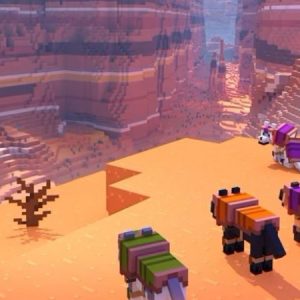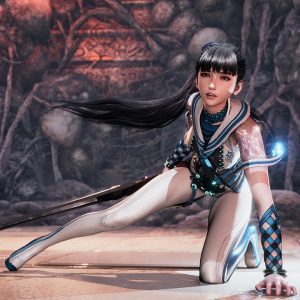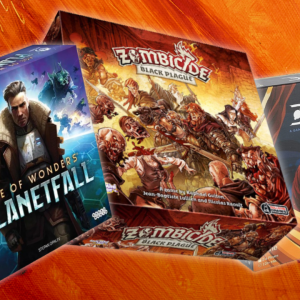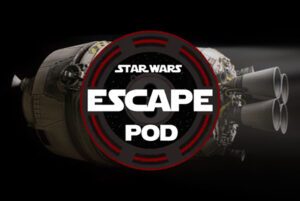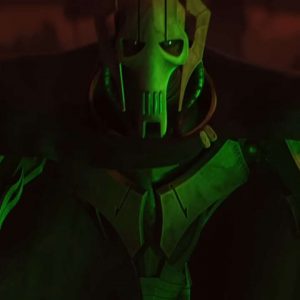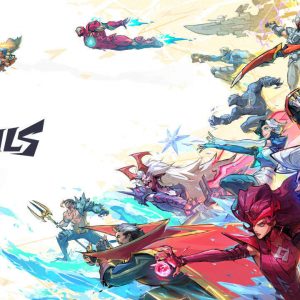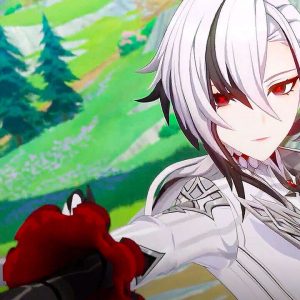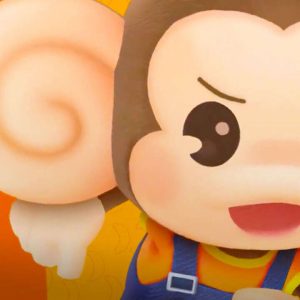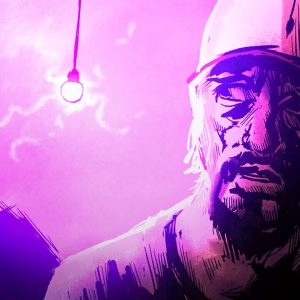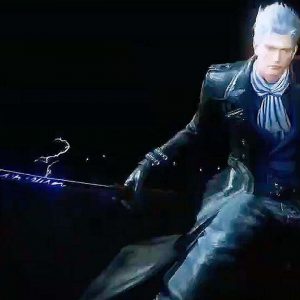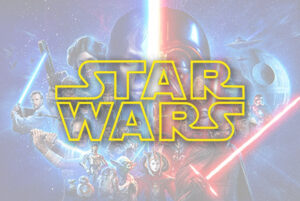An overview of some of the best features for new or returning players.
(UPDATED on February 26 with Go Snapshot and the Team Change Medallion)
If you stopped playing Pokemon Go after the initial hype died down or if you never picked it up, there are a lot of exciting features that have helped transform it into a more robust game than you probably realize.
From PVP to trading and even in-game effects caused by the weather in the real world around you, Niantic has turned Pokemon Go into everything envisioned in the original announcement trailer, and in some ways even exceeded it.
Here are a few of the most exciting features to come to Pokemon Go in the last two and a half years:
- Friends, Gifts, and Trading
- PVP Trainer Battles
- Dynamic Weather and Pokemon Spawns
- Field Research and Special Research
- Raid Battles and Legendary Pokemon
- New Pokemon Generations and Shiny Pokemon
- Pokemon Go Snapshot
- Lucky Pokemon
- Team Changes
- Sending Pokemon from Go to Let’s Go
Friends, Gifts, and Trading
In Summer 2018, Pokemon Go added its first true social feature: friend lists! Every player has their own friend code that you can share with other players. You can add up to 200 friends to your friend list.
Once you’ve exchanged codes and accepted a request, you’ll be able to see your friend’s most recently caught Pokemon, and you can also see stats including how many battles they’ve won, how far they’ve walked in the game, and how many Pokemon they’ve caught in total.
Once you’ve added a friend, you’ll be able to achieve one of four Friendship Levels: Good Friend, Great Friend, Ultra Friend, and Best Friend. Raising your friendship level will offer various bonuses, including reduced Stardust costs for trades, extra damage during gym battles alongside a friend, and additional Premiere Balls during raids alongside a friend.
You can increase your friendship level with a particular friend by sending gifts (see below), trading, or participating in gym battles or raid battles together. Your friendship level can only increase once per day per friend, and this is how long it takes to achieve each level:
- Good friend: 1 day
- Great friend: 7 days
- Ultra friend: 30 days
- Best friend: 90 days
PokeStops will now occasionally drop Gifts, which you can send to friends on your list. Gifts will include a “postcard” from the PokeStop where you picked up the gift, as well as a various items. Gifts can also contain a special egg containing some rare Pokemon.
Gifts can also contain bonus Stardust, and you can delete unsent gifts from your inventory. You’ll also receive 200 XP for each gift you send a friend!
Along with friends, Pokemon Go also added one of its most-requested features since launch: trading! You can only trade with players on your friends list, and you have to be within 200 meters of each other to trade.
Players receive candy bonuses depending on the original catch location of the Pokemon being traded. If the Pokemon were caught far apart, you’ll receive extra candy for the Pokemon you’re trading.
Finally, the HP and CP of Pokemon traded to friends will be reset, resulting in random new stats for the Pokemon you receive. The range of possible HP and CP outcomes can be extremely wide or extremely narrow depending on your friendship levels, with Best Friends much more likely to receive stronger Pokemon.
PVP Trainer Battles
Following trading, Pokemon Go added its other most requested feature: PVP Trainer Battles.
Starting a trainer battle is as simple as scanning a Battle Code. In the Nearby menu in the lower right corner of the screen (which normally shows Pokemon and Raids in your area), a new Battle tab allows you to view a Battle Code, which is essentially a QR code featuring your trainer’s avatar.
A player standing close to you can scan your code (or you can scan theirs) in order to initiate a battle. This means you’ll need to be standing directly next to anyone you’re hoping to battle, with one major exception: you’ll be able to battle against your Ultra or Best Friends remotely over the internet.
Pokemon Go Trainer Battles are 1 v. 1, and each player uses a team of three Pokemon. A set of Pokemon will be recommended to you and can be replaced manually, or you can select from one of your pre-made Battle Parties prepared ahead of time.
Before you can choose your team of Pokemon, you’ll need to decide which League you want to battle in. Trainer Battles will let you decide between three Leagues:
- Great League: Each Pokemon must be 1,500 CP or under
- Ultra League: Each Pokemon must be 2,500 CP or under
- Master League: Pokemon have no CP limits
Once the battle begins, it’ll be familiar to anyone who’s tried Raid or Gym battles in the past. You’ll tap to use your Pokemon’s Fast Move, which will build up energy and eventually allow you to use a more powerful Charge Move. In battle, you’ll be able to choose which Charge Move you want to use once you’ve built up enough energy, then you’ll have an additional few seconds to charge it up even more.
During that window, the opposing player will have the option to use a Protect Shield. Each player only gets two of these to use for the entire battle, so you’ll need to be careful in deciding which Pokemon and which attacks to use them against.
At the end of a battle, both players will receive prizes regardless of whether they win or lose, which include the possibility of Stardust or Sinnoh Stones, which allow you to evolve some Generation 4 Pokemon. You can earn these rewards three times per day by battling other players. Battling against a player is also a new option for your once-per-day friendship increase.
Players can also train by fighting against AI-controlled versions of the three Team Leaders (Blanche, Candela, and Spark), which are also accessible via the Battle tab in the Nearby menu. Once per day, players can also earn rewards from this method of training (with the same potential prizes as battles against real players).
Dynamic Weather and Pokemon Spawns
Looking at the main screen when you boot up Pokemon Go, the logo in the top right represents the current weather. Weather in Pokemon Go is dynamic and corresponds with the actual real-world weather around you, and it changes every hour.
Eight weather states are currently available in Pokemon Go: rain, wind, snow, fog, sun (daytime), clear (nighttime), cloudy, and partly cloudy.
The in-game weather will affect the Pokemon spawns around you, with certain types more likely to appear in certain conditions and the attack power of certain moves boosted during battles.
Weather has been one of the most significant changes to Go since it launched, completely changing what appears around you and potentially making your neighborhood have different Pokemon day to day. If you could only find Pidgey, Rattata, and Zubat in your house back at launch, you might be surprised by how diverse the Pokemon population has become.
Field Research and Special Research
Back on the main screen, the pair of binoculars in the bottom right are how you access Research.
There are two types of research. First, “field” research is something you can complete multiple times per day. These are basic tasks (hatch an egg, catch 10 Pokemon, etc.) that you’ll generally complete during typical play anyway. You can obtain new tasks by spinning any PokeStop, and you can hold up to three at a time (or trash the ones you don’t want). The tasks will either give you items or an encounter with a Pokemon as a reward, with better rewards for harder tasks.
Once per day, the first research task you complete will give you a daily stamp. For every seven stamps you get, you’ll have the chance to open a Research Breakthrough Box, which awards you with an encounter with a rare or legendary Pokemon. Each month gets a different Pokemon, so if you get your seventh stamp on October 31, you’ll get October’s Pokemon if you open the box immediately, or November’s if you wait until the next day.
The second type of research is “special” research, which is the closest thing Pokemon Go has to a story mode. Special research gives you a mission and a series of multiple tasks to complete for a unique reward. Special Research tasks so far have included A Mythical Discovery, which entails completing various sets of tasks in order to encounter Mew, as well as A Ripple in Time to obtain the Mythical Pokemon Celebi, and the Halloween-themed A Spooky Message, which offered the Ghost-type Pokemon Spiritomb.
These missions are peppered with appearances from Professor Willow, who will appear in cut scenes at the end of each step to share some new information and assure you you’re on the right path.
You can hold multiple special research tasks at once, and they’ll never expire, meaning you can start the game right now and begin your quest for Mew or Celebi if you haven’t already, and you’ll still be able to start it even once new special research appears. Each player can only obtain a single Mew and Celebi, and you won’t be able to transfer or trade them, so don’t worry about accidentally losing yours!
Raid Battles and Legendary Pokemon
As you walk through the world, you may see messages pop up periodically that a battle is about to begin nearby, or you may see timers on top of gyms. Both of these are part of the raid battle system that Pokemon Go added in 2017.
If you find a raid before it’s begun, you’ll see an egg on top of a gym that will eventually hatch into a raid boss. There are five tiers of raids, and the color of the egg corresponds to the difficulty of the Pokemon inside.
Tier one and two raids are in pink eggs, which are the easiest type of raid. These are generally battles you’ll be able to beat by yourself, or maybe with the help of one or two other trainers if you’re a low level.
Tier three and four raids are in yellow eggs, which have a wide range of difficulty. In almost every case, a level three raid can be beaten solo by a high level player, but may require the help of a few others depending on your battle party. Tier four raids can be more difficult, but can generally be beaten by five or six players at most.
Dark eggs represent legendary raids, which are the most difficult to complete. Some legendary Pokemon are easier to battle than others, with high level players able to take down some with just two players, or others requiring closer to a dozen players to defeat. In general, 10 players is a good rule of thumb, especially across a range of different experience levels, and if you have a full raid lobby of 20 players you should have no trouble at all.
The actual process of battling a raid boss will be much, much easier if you take the time to understand attack types. For example, knowing that a water-type Pokemon does super effective damage to a fire-type since fire is weak to water may sound simple, but there are extra factors that can help you do even more damage. STAB (or Same Type Attack Bonus) means that a Pokemon will do extra damage if they’re using moves that match their own type, and understanding movesets and damage output is important if you want to defeat a raid boss with a small group.
After you beat a raid boss, you’ll get a few raid items, then have a chance at a bonus challenge, which allows you to try to capture the Pokemon you just fought. Depending on how much damage you did and which team currently controls the gym where you battled, you’ll receive a set number of Premiere Balls at the end of the raid, and these are the only balls you’ll be able to use to catch the Pokemon. If you run out of balls, the Pokemon will flee, or if you catch it with extra balls leftover, you won’t get to keep your extras.
If you want to try out a raid, you can get a free raid pass once per day by visiting any gym. From there, additional passes can be purchased from the shop, or you may receive a special invitation-only EX raid pass if you meet certain conditions (which you can read about here). EX raid passes were previously the only way to catch the Legendary Pokemon Mewtwo, and most recently the Mythical Pokemon Deoxys was added to EX Raids.
If you’re trying to level up, raids are also one of the fastest way to gain XP in the game, so if you have any Lucky Eggs (which double all of the XP you earn for 30 minutes) in your inventory, we recommend you use them!
New Pokemon Generations and Shiny Pokemon
Pokemon Go currently includes Pokemon through generation 4 (Sinnoh), which originally appeared in Pokemon Diamond and Pearl. As of this writing, 465 unique Pokemon are currently available in the game, including some that can only be obtained through raids and research, and others that only appear in certain parts of the real world.
All 151 Pokemon from generation 1 (Kanto) are currently available in the game. Pokemon Go also added the Alolan forms of Kanto Pokemon, which are alternate versions that appeared in Pokemon Sun and Moon, which take place in a region called Alola. All 18 Alolan forms of Kanto Pokemon are currently available in Pokemon Go.
All 100 Pokemon from generation 2 (Johto) are available, which originally appeared in Pokemon Gold and Silver.
Generation 3 (originally in Pokemon Ruby and Sapphire) is still ongoing in Pokemon Go, with 133 Pokemon added so far, leaving 2 still missing. This includes Kecleon and mythical Pokemon Jirachi. While we expect Jirachi to appear in Special Research in the future, it’s a mystery how Kecleon will be added.
Generation 4 Pokemon (originally from Diamond and Pearl) began to arrive in October 2018, with an initial wave of around two dozen Pokemon followed by additional Pokemon during Pokemon Go’s Halloween event and even more added for the holidays. A new wave of Pokemon was added in January 2019, introducing additional evolutions from previous generations. So far, four Legendary Pokemon have been released from Generation 4: Giratina, Cresselia, Heatran, and Palkia.
Meltan and Melmetal, two brand-new Pokemon added along with the release of Pokemon Let’s Go on Nintendo Switch, are also available in Pokemon Go, but are currently sorted into an “Unknown” category at the bottom of the Pokedex.
Pokemon Go has also added Shiny Pokemon, which are rare Pokemon that feature alternate coloring but don’t otherwise offer any kind of advantage over their traditional counterparts beyond bragging rights. Shiny Pokemon are quite rare under normal circumstances, but the odds of encountering one can be boosted during special events, or for Pokemon that can only be encountered in raid battles.
Your best chance of encountering a shiny Pokemon comes on Pokemon Go Community Day, which is a monthly event that takes place for three hours on a single day and features a Pokemon with a unique move. During the three hour window of community day, the featured Pokemon will spawn in massive numbers, and the odds of encountering a shiny are significantly increased.
Pokemon Go Snapshot
In February 2019, Pokemon Go finally added another long-requested feature: the ability to photograph any Pokemon in your collection using AR!
Previously, Pokemon could only be photographed in the wild, often resulting in the Pokemon running away. To prevent that, Niantic introduced Go Snapshot. Simply find any Pokemon in your collection, click the camera icon in the top right, and you can photograph your friend to your heart’s content.
If you’re lucky, when you review your photos afterward, you may spot a photobomb from another Pokemon! When you exit Go Snapshot, that Pokemon will appear on the map nearby and you’ll have the opportunity to catch it.
So far, generation 2 Pokemon Smeargle is the only Pokemon to appear in photobombs. For more information on photobombs, read about how to catch Smeargle in our Pokemon Go wiki.
Lucky Pokemon
Following the introduction of trading, Pokemon Go introduced Lucky Pokemon.
Pokemon have a chance to become Lucky Pokemon when they’re traded. Lucky Pokemon will require less Stardust to power up than regular Pokemon, so you won’t have to spend as much to get them to their maximum CP.
A Pokemon is more likely to become Lucky the longer it’s spent in your Pokemon storage, so Pokemon from closer to the game’s launch more than two years ago probably have a better chance than something you’ve caught recently.
In addition to getting a cool sparkly background, Lucky Pokemon have a higher chance to have good stats, which, coupled with the reduced Stardust cost, can make it easier than ever to have strong Pokemon for battle.
Team Changes

In February 2019, Niantic added the Team Change Medallion, a unique item in the store that allows you to change your previously chosen team.
Just like when you first choose a team, you can pick between Team Mystic, Team Valor, or Team Instinct.
The Medallion is available in the shop for 1000 PokeCoins, but can only be used once every 365 days, so make sure you’re positive before you switch or you’ll be stuck with your choice for a full year.
Sending Pokemon from Go to Let’s Go
In November 2018, The Pokemon Company and Nintendo released Pokemon: Let’s Go Pikachu and Let’s Go Eevee, two new games for Nintendo Switch that return to Kanto (the region of the original 151 Pokemon).
Pokemon Go players can get a head start in either game by sending Pokemon from their phone over to the Nintendo Switch. Any generation 1 Pokemon or Alolan form can now be sent over to Nintendo’s console, including shiny variants, but no Pokemon with hats or sunglasses, and no Mew.
It’s a one-way trip from your phone to your Switch, so be sure you want to say goodbye to a Pokemon before you start the process. Once a Pokemon is sent away from your phone, it can never come back again.
Pokemon you transfer from Go will appear in Let’s Go in a special park called Go Park where you’ll have to re-catch them. Once a Pokemon is captured, its stats will change in order to accommodate traditional Pokemon games’ six stats instead of Pokemon Go’s three stats.
You can find the full process of how to transfer Pokemon from Go to Let’s Go in our Pokemon Let’s Go wiki.
And for much more on Pokemon Go, read about how Pokemon Go took over an entire city in Japan, plus our full list of Generation 4 Pokemon.
Andrew is IGN’s executive editor of news and gets way too excited every time new Pokemon are added to this game. You can find him rambling about Persona and cute animals on Twitter.
